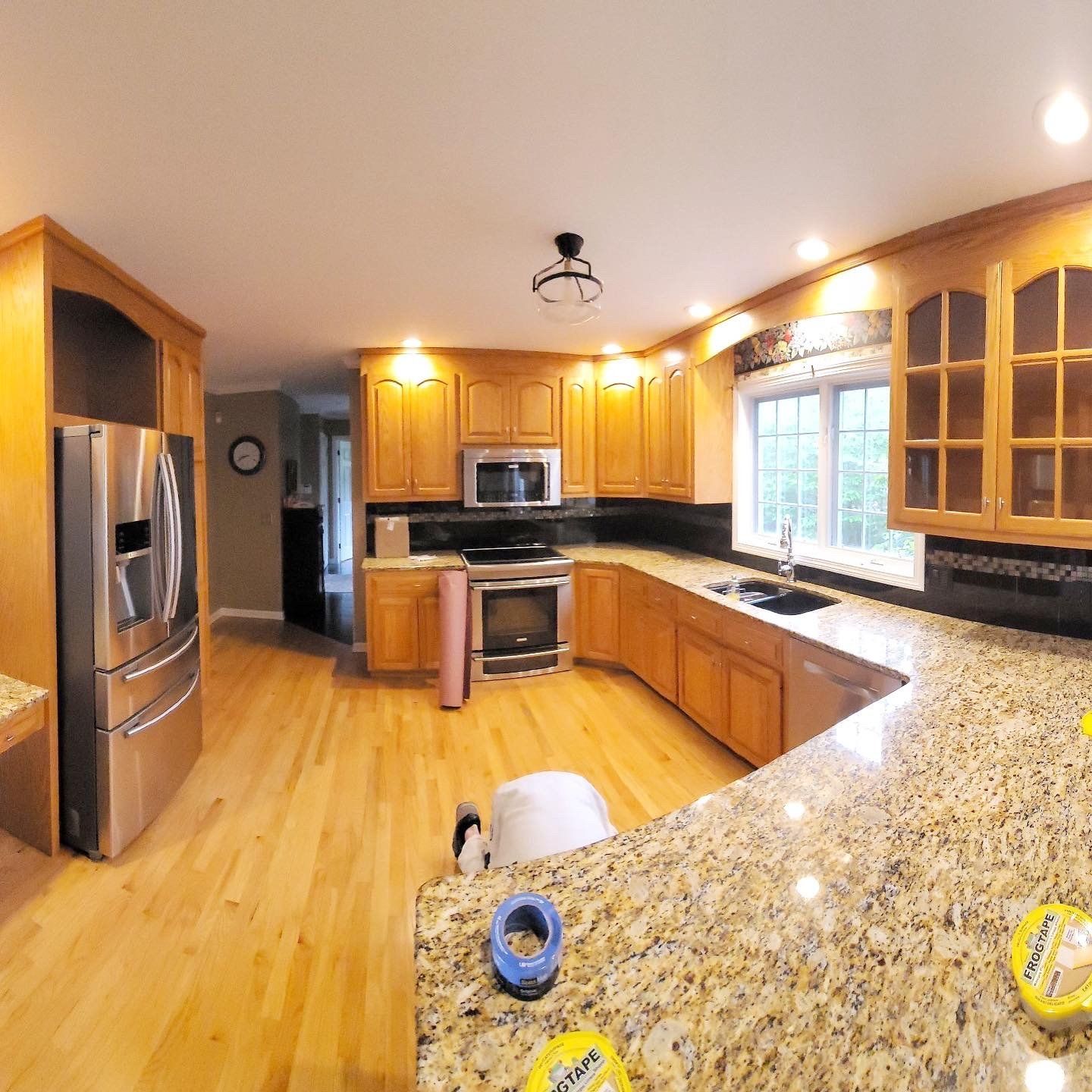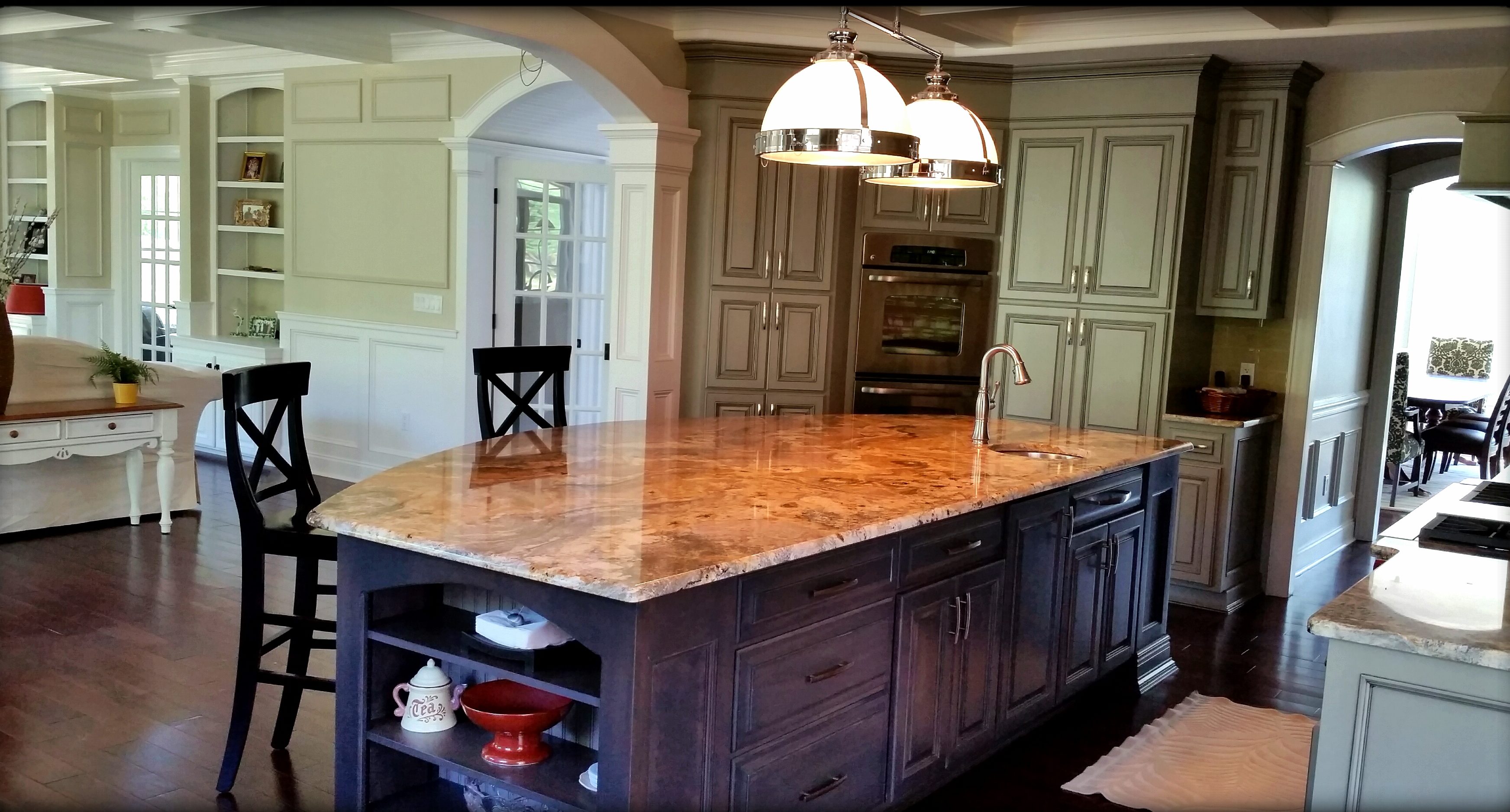Finding and Vetting Kitchen Cabinet Painting Contractors in CT

Choosing the right contractor for your kitchen cabinet painting project is crucial for a successful and aesthetically pleasing outcome. A poorly executed paint job can detract significantly from your kitchen’s appearance and value, while a well-done job can dramatically enhance it. Careful vetting is essential to avoid costly mistakes and ensure a positive experience.
Resources for Finding Reputable Contractors
Locating qualified and reliable kitchen cabinet painting contractors in Connecticut requires a multi-pronged approach. Leveraging various resources increases your chances of finding a contractor who meets your needs and expectations.
- Online Directories: Websites like Angie’s List, HomeAdvisor, Yelp, and Nextdoor often feature reviews and ratings of local contractors. These platforms allow you to compare pricing, services, and customer feedback before contacting any businesses. However, always remember to critically evaluate reviews, as some may be biased or inaccurate.
- Professional Associations: The Painting and Decorating Contractors of America (PDCA) and the Associated Builders and Contractors (ABC) maintain member directories. These associations often have vetting processes, ensuring members adhere to professional standards and ethical practices. Checking if a contractor is a member of such organizations can provide an additional layer of assurance.
- Local Referrals: Word-of-mouth referrals from friends, family, neighbors, or real estate agents can be invaluable. Personal recommendations offer firsthand insights into a contractor’s work quality, professionalism, and reliability. Asking for photos of completed projects can further strengthen the assessment.
Verifying Licenses and Insurance, Kitchen cabinet painting contractors ct
Before engaging any contractor, it’s paramount to verify their licensing and insurance coverage. This protects you from potential legal and financial liabilities.
- Licensing: Connecticut requires contractors to obtain licenses. Contact the Connecticut Department of Consumer Protection to verify a contractor’s license status and ensure it’s valid and up-to-date. This step helps identify unlicensed operators who may lack the necessary skills or insurance.
- Insurance: Ensure the contractor carries general liability insurance and workers’ compensation insurance. General liability insurance protects you from financial losses if the contractor causes damage to your property. Workers’ compensation insurance protects the contractor’s employees in case of on-site injuries.
Comparison of Contractor Service Offerings
Contractors offer varying levels of service. Understanding these differences is vital for choosing the right fit for your project.
| Service Type | Cabinet Preparation | Painting Process | Additional Services |
|---|---|---|---|
| Full-Service Contractor | Complete cabinet disassembly, cleaning, repair, and priming. | Multiple coats of high-quality paint, including specialized finishes if needed. | Cabinet hardware removal and reinstallation, minor repairs, and potentially other related home improvements. |
| Painting-Only Contractor | Assumes cabinets are prepared and primed; may offer limited preparation services for an additional fee. | Application of paint coats according to client specifications. | Limited additional services; primarily focuses on the painting aspect of the project. |
| Specialty Contractor | May specialize in specific cabinet styles or paint types (e.g., lacquer, milk paint). | Expertise in specific painting techniques and finishes. | Services tailored to their area of expertise. |
| Independent Painter | Often handles smaller projects or individual aspects of a larger project. | May lack the comprehensive resources of larger companies. | Limited additional services; often focuses on the painting itself. |
Contractor Vetting Checklist
Thorough vetting safeguards your investment and ensures a smooth project execution.
- Experience: Inquire about the contractor’s years of experience in kitchen cabinet painting and request examples of their previous work. Look for a portfolio showcasing a variety of projects and styles.
- References: Request at least three references from previous clients and contact them to inquire about their experiences. Ask about timelines, communication, cleanup, and overall satisfaction.
- Licensing and Insurance: Verify the contractor’s licenses and insurance coverage with the relevant authorities. Request copies of their certificates for your records.
- Detailed Estimate: Obtain a detailed, written estimate that clearly Artikels all costs, including materials, labor, and any additional services. Compare estimates from multiple contractors before making a decision.
- Contract Review: Carefully review the contract before signing it. Ensure it includes payment schedules, project timelines, warranty information, and dispute resolution mechanisms.
- Warranty Information: Inquire about the warranty offered on their workmanship and materials. A comprehensive warranty demonstrates confidence in their work.
The Cabinet Painting Process

Professional kitchen cabinet painting is a multi-stage process demanding precision and expertise. A successful outcome relies heavily on meticulous preparation and skilled execution, ensuring a durable and aesthetically pleasing finish that enhances the kitchen’s overall appearance. The transformation goes beyond a simple coat of paint; it involves careful surface treatment, appropriate primer selection, and the application of high-quality paint in multiple coats.
Surface Preparation
Thorough preparation is paramount for a long-lasting and visually appealing paint job. Neglecting this stage can lead to peeling, chipping, and an uneven finish. The process involves several critical steps:
- Cleaning: Cabinets are thoroughly cleaned to remove grease, grime, and any existing loose paint. This often involves degreasing agents and meticulous scrubbing to ensure a clean surface for optimal paint adhesion.
- Sanding: After cleaning, the cabinet surfaces are sanded to create a smooth surface and improve paint adhesion. This might involve different grit levels of sandpaper, starting with coarser grits to remove imperfections and finishing with finer grits for a smooth finish. Any existing glossy surfaces need to be dulled to allow the new paint to bond effectively.
- Repairing: Any damaged areas, such as chips or cracks, are repaired using wood filler. Once dry, the filler is sanded smooth to blend seamlessly with the surrounding surface.
- Priming: A high-quality primer is applied to seal the wood and provide a uniform base for the topcoat. Primer enhances paint adhesion, blocks stains, and creates a consistent color throughout the cabinets.
- Caulking: Gaps and seams between cabinet doors and frames are filled with caulk for a professional, seamless look. This step is crucial for achieving a clean finish and preventing future problems.
Paint Application and Finishing
The application of paint requires precision and technique to ensure an even and flawless finish. Multiple thin coats are preferable to one thick coat to prevent drips, runs, and uneven coverage.
- Paint Selection: High-quality paints specifically designed for cabinets are chosen. The paint type (e.g., acrylic-alkyd, acrylic-latex) and sheen level are selected based on the client’s preferences and the kitchen’s style.
- Application Technique: Paint is applied using brushes, rollers, or sprayers, depending on the project’s scale and the desired finish. Multiple thin coats are applied, allowing each coat to dry completely before applying the next. Proper technique is crucial to avoid brushstrokes and ensure even coverage.
- Finishing Coats: After the paint is dry, a clear topcoat can be applied to provide extra protection and enhance durability. This is especially important in high-traffic areas such as kitchens.
Paint Finishes: A Comparison
Different paint finishes offer distinct advantages and disadvantages. The choice depends on personal preference and the overall kitchen design.
| Finish | Pros | Cons | Best Suited For |
|---|---|---|---|
| Matte | Hides imperfections, low-sheen look | More prone to showing fingerprints and scratches, difficult to clean | Traditional, rustic kitchens |
| Semi-gloss | Durable, easy to clean, resists moisture | Shows imperfections more readily than matte | Modern, contemporary kitchens |
| High-gloss | Very durable, easy to clean, adds a dramatic look | Shows imperfections most readily, requires meticulous preparation | Sleek, modern kitchens |
Visual Transformation
Imagine a dated kitchen with yellowed, worn cabinets. The surface is uneven, with scratches and chips visible. After professional painting, the cabinets are transformed. A fresh coat of, for example, a deep navy semi-gloss paint revitalizes the space. The previously dull, textured surface is now smooth and glossy. The color change creates a dramatic shift in the kitchen’s ambiance, making it feel modern and updated. The overall improvement in appearance is striking, enhancing the kitchen’s value and appeal. For instance, a dated oak kitchen with orange tones might be transformed into a crisp white or a sophisticated gray, completely changing the feel and light of the room. The new paint also hides imperfections, creating a unified and elegant look.
Cost Considerations and Project Management: Kitchen Cabinet Painting Contractors Ct

Painting kitchen cabinets is a significant home improvement project, and understanding the associated costs and effectively managing the project timeline are crucial for a successful outcome. This section details the financial aspects and project management strategies to ensure a smooth and budget-friendly renovation.
Kitchen cabinet painting contractors ct – Accurate cost estimation and proactive project management are essential for avoiding unexpected expenses and delays. Failing to account for all potential costs or to establish clear communication with the contractor can lead to frustration and financial strain. A well-defined plan, including a detailed budget and realistic timeline, minimizes these risks.
Typical Costs Associated with Kitchen Cabinet Painting in Connecticut
The cost of painting kitchen cabinets in Connecticut varies depending on several factors. These factors include the size of the kitchen, the number of cabinets, the condition of the existing finish, the type of paint used, and the contractor’s labor rates. The following provides a breakdown of typical expenses.
- Labor: This is often the largest expense, typically ranging from $3,000 to $8,000 or more, depending on the complexity of the project and the contractor’s hourly rate. Highly detailed or ornate cabinets will cost more.
- Materials: Materials include primer, paint, sandpaper, and other supplies. Expect to spend between $500 and $2,000, depending on the quality and quantity of materials needed. High-end paints or specialty primers will increase this cost.
- Additional Expenses: These can include cabinet hardware removal and replacement ($200-$800), cabinet door repair or refinishing ($100-$500 per door, depending on the damage), and disposal fees for old paint and materials ($50-$200).
Project Timeline Management and Contractor Communication
Effective communication and realistic expectations are key to managing the project timeline. Delays can occur due to unforeseen circumstances, such as material shortages or unexpected cabinet damage. Establishing clear communication channels from the outset minimizes these issues.
- Detailed Contract: A comprehensive contract should Artikel the scope of work, payment schedule, project timeline with specific start and completion dates, and clear communication protocols.
- Regular Check-ins: Schedule regular check-in meetings or calls with the contractor to monitor progress, address any concerns, and make necessary adjustments to the timeline.
- Contingency Planning: Build a buffer into the project timeline to account for potential delays. This reduces stress and prevents unexpected disruptions to your schedule.
Creating a Realistic Budget for Kitchen Cabinet Painting
Developing a detailed budget is crucial for avoiding cost overruns. This involves carefully considering all aspects of the project, from the size of the kitchen to the type of paint used. The following table provides a sample budget framework.
| Budget Item | Estimated Cost (Range) | Notes |
|---|---|---|
| Labor | $3,000 – $8,000 | Dependent on project size and complexity. |
| Paint & Primer (High-Quality) | $800 – $1,500 | Consider Benjamin Moore or Sherwin-Williams for durability. |
| Sandpaper, Brushes, Rollers | $100 – $200 | Quality tools improve the finish. |
| Cabinet Hardware (Replacement) | $200 – $800 | Optional, but enhances the overall look. |
| Cabinet Repairs (if needed) | $100 – $500+ per door | Depends on extent of damage. |
| Disposal Fees | $50 – $200 | Proper disposal of materials is crucial. |
| Total Estimated Cost | $4,250 – $11,000+ | This is a broad range; obtain multiple quotes. |
